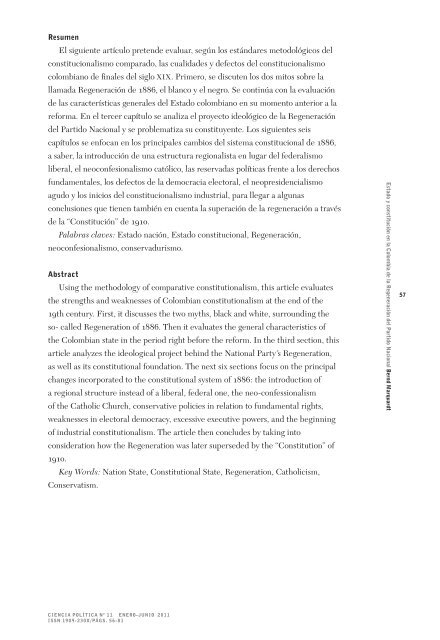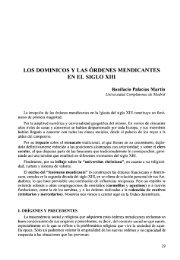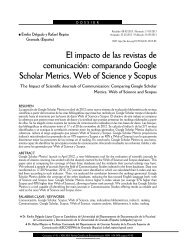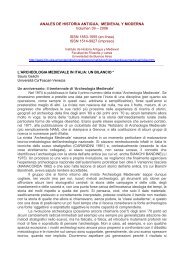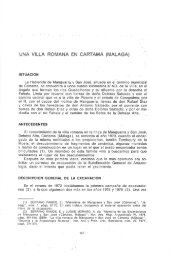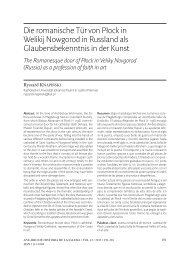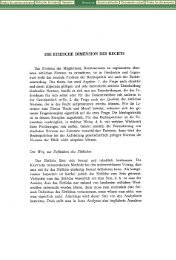Texto completo - Dialnet
Texto completo - Dialnet
Texto completo - Dialnet
Create successful ePaper yourself
Turn your PDF publications into a flip-book with our unique Google optimized e-Paper software.
Resumen<br />
El siguiente artículo pretende evaluar, según los estándares metodológicos del<br />
constitucionalismo comparado, l as cualidades y defectos del constitucionalismo<br />
colombiano de finales del siglo XIX. Primero, se discuten los dos mitos sobre la<br />
llamada Regeneración de 1886, el blanco y el negro. Se continúa con la evaluación<br />
de las características generales del Estado colombiano en su momento anterior a la<br />
reforma. En el tercer capítulo se analiza el proyecto ideológico de la Regeneración<br />
del Partido Nacional y se problematiza su constituyente. Los siguientes seis<br />
capítulos se enfocan en los principales cambios del sistema constitucional de 1886,<br />
a saber, la introducción de una estructura regionalista en lugar del federalismo<br />
liberal, el neoconfesionalismo católico, las reservadas políticas frente a los derechos<br />
fundamentales, los defectos de la democracia electoral, el neopresidencialismo<br />
agudo y los inicios del constitucionalismo industrial, para llegar a algunas<br />
conclusiones que tienen también en cuenta la superación de la regeneración a través<br />
de la “Constitución” de 1910.<br />
Palabras claves: Estado nación, Estado constitucional, Regeneración,<br />
neoconfesionalismo, conservadurismo.<br />
Abstract<br />
Using the methodology of comparative constitutionalism, this article evaluates<br />
the strengths and weaknesses of Colombian constitutionalism at the end of the<br />
19th century. First, it discusses the two myths, black and white, surrounding the<br />
so- called Regeneration of 1886. Then it evaluates the general characteristics of<br />
the Colombian state in the period right before the reform. In the third section, this<br />
article analyzes the ideological project behind the National Party´s Regeneration,<br />
as well as its constitutional foundation. The next six sections focus on the principal<br />
changes incorporated to the constitutional system of 1886: the introduction of<br />
a regional structure instead of a liberal, federal one, the neo-confessionalism<br />
of the Catholic Church, conservative policies in relation to fundamental rights,<br />
weaknesses in electoral democracy, excessive executive powers, and the beginning<br />
of industrial constitutionalism. The article then concludes by taking into<br />
consideration how the Regeneration was later superseded by the “Constitution” of<br />
1910.<br />
Key Words: Nation State, Constitutional State, Regeneration, Catholicism,<br />
Conservatism.<br />
CIENCIA POLÍTICA Nº 11 ENERO-JUNIO 2011<br />
ISSN 1909-230X/PÁGS. 56-81<br />
Estado y constitución en la Colombia de la Regeneración del Partido Nacional Bernd Marquardt<br />
57


